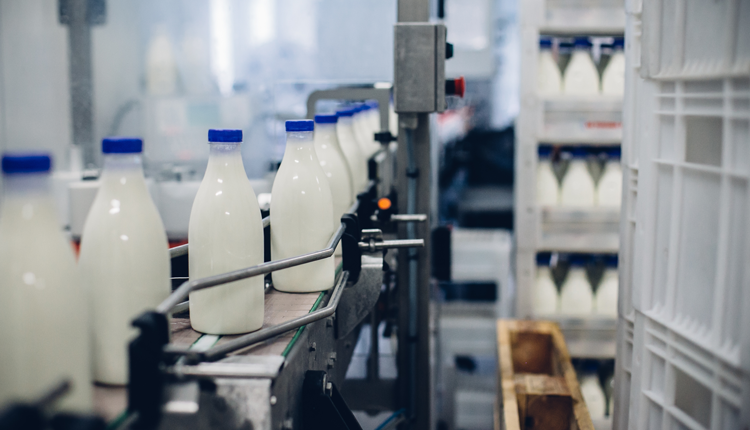
The U.S. average All-Milk price is on track to finish at about $17.65 per hundredweight for all of 2017. My forecast, based on the CME futures as of mid-December, has it averaging about $16.50 per hundredweight in 2018. This would be down $1.15 per hundredweight from 2017, 65 cents lower than in 2015, and only 20 cents better than prices averaged in 2016.
Episodes of price weakness always have explanations that can be reduced to some type of imbalance between supply and demand.
What’s curious about the current sour price outlook is that there are signs that the U.S. industry may be gradually emerging from a recent episode of excess supply, not entering into one. For more than a year, U.S. milk production had been growing considerably faster than the 1.5 percent traditional rate of annual growth that the total market, domestic plus exports, has been able to sustain during the past few years.
But production growth has been moderating for much of last year and, since this past summer, has fallen below that sustainable rate. Stocks of American-type cheese, usually a key bellwether of market balance, were flirting with setting a new all-time record high this past spring and summer, but more recently have come back into alignment with a more normal trend in terms of days of use in stock.
USDA’s forecasts for the coming year, which it introduces in May and updates each month thereafter, mirrors this dissonance for 2018. Between May and December, USDA has:
- Reduced its estimate of year-over-year U.S. milk production growth in 2018, from 2.4 percent to 1.7 percent
- Roughly maintained its estimate of 3 percent growth in total commercial use this year.
- Lowered the midpoint estimate of its projected U.S. All-Milk price during 2018 by $1.55 per hundredweight.
Why the dreary forecast?
So we’re going to need to dig a little deeper to learn what’s driving the price pessimism for this year.
To find it, let’s look at the individual outlooks for the four products whose prices are the key determinant of the milk price, as measured by the national All-Milk price reported by USDA’s National Agricultural Statistics Service (NASS). These are butter, cheddar cheese, nonfat dry milk, and dry whey. These prices determine the formula prices for classes and components under federal and some state milk marketing orders. These four prices will predict the U.S. reported All-Milk price with an average accuracy of at least 98 percent.
The first place to look for problems is world dairy markets. These markets reflect a much broader supply-demand situation than U.S. domestic dairy markets, and with which U.S. dairy markets are becoming steadily more integrated. World markets certainly appear to be headed into their fifth major price downturn of the past dozen years.
Most severely affected is skim milk powder (SMP), which never truly recovered from the previous downturn of 2015 to 2016. It is now selling within a few dollars per ton of both that previous low as well as the low it reached during the major world price meltdown of 2009.
The European Union currently has about 840 million pounds of SMP in government intervention (price support) stocks, mostly acquired in 2016. The EU is desperate to dispose of these aging stocks, but EU rules prevent it from being sold at less than the purchase price or to cause any “disturbance of the market” in doing so. But there’s no way for the EU to release these stocks without violating both of these rules.
There is also a strong likelihood that the 240 million pounds of SMP that the EU annually commits to purchase at the fixed price of about 90 cents a pound will be reduced, possibly to zero, when the new intervention season opens in March.
The U.S. has its own surplus of nonfat dry milk. Of the 320 million pounds in U.S. private stocks at the end of October, roughly 120 million pounds were in excess of a normal stocks-to-use ratio. With so much surplus skim powder overhanging the market, USDA’s December midpoint estimate of 78 cents a pound for 2018 average U.S. nonfat dry milk prices, which was down from its initial May estimate of 95 cents, may still be optimistic. As it was, an average price of 78 cents a pound, which the mid-December CME futures were coincidentally also projecting, would be the lowest annual average U.S. nonfat dry milk price since at least 2000.
International dry whey prices are also under pressure.
Like nonfat dry milk/skim milk powder, the large proportion of U.S. dry whey production that is exported keeps domestic and world prices closely aligned. USDA has lowered its mid-point estimate of 2018 U.S. average dry whey prices from 49 cents a pound in May to 33 cents in December. At that time, the CME futures were projecting it even lower, at 25 cents, the lowest annual average in 10 years.
A few bright spots
With both dry ingredient prices exerting a heavy drag, it will fall to butter and cheese to provide whatever strength there will be in U.S. milk prices this year. Butter prices have been a bright spot.
Butter prices have retreated a bit in recent months, but the mid-December CME futures projected they would average $2.30 per pound in 2018. At this price, butter would provide about 60 percent of the total projected value of producers’ milk checks this year.
With butter and skim ingredients pulling producer prices in opposite directions this year, Cheddar cheese remains the wild card in the outlook, and the most important one. While milk prices will receive their largest contribution from butter this year, they will be most sensitive to changes in cheese prices. A 10 percent variation in average commodity prices this year will affect the year’s average milk price by 7 percent for cheese, versus 3 percent for butter and 1 percent each for nonfat dry milk and dry whey.
The mid-December CME futures projected that U.S. Cheddar prices would average about $1.65 per pound in 2018, pretty much in the middle of the pack in terms of annual average prices for every year since 1999.
If recent gains in U.S. milk production, and Cheddar cheese production, continue to moderate, and cheese exports continue to expand, the mid-December CME futures outlook for 2018 milk prices will likely turn out to be too low. If not, the current futures projection that the Margin Protection Program (MPP-Dairy) will make payments at the upper end of the coverage range this year will likely come to pass. Given how badly the current MPP-Dairy margin formula understates the true cost of dairy feed, a payout of MPP-Dairy would be a clear signal that U.S. dairy farmers will not have a particularly good year in 2018








